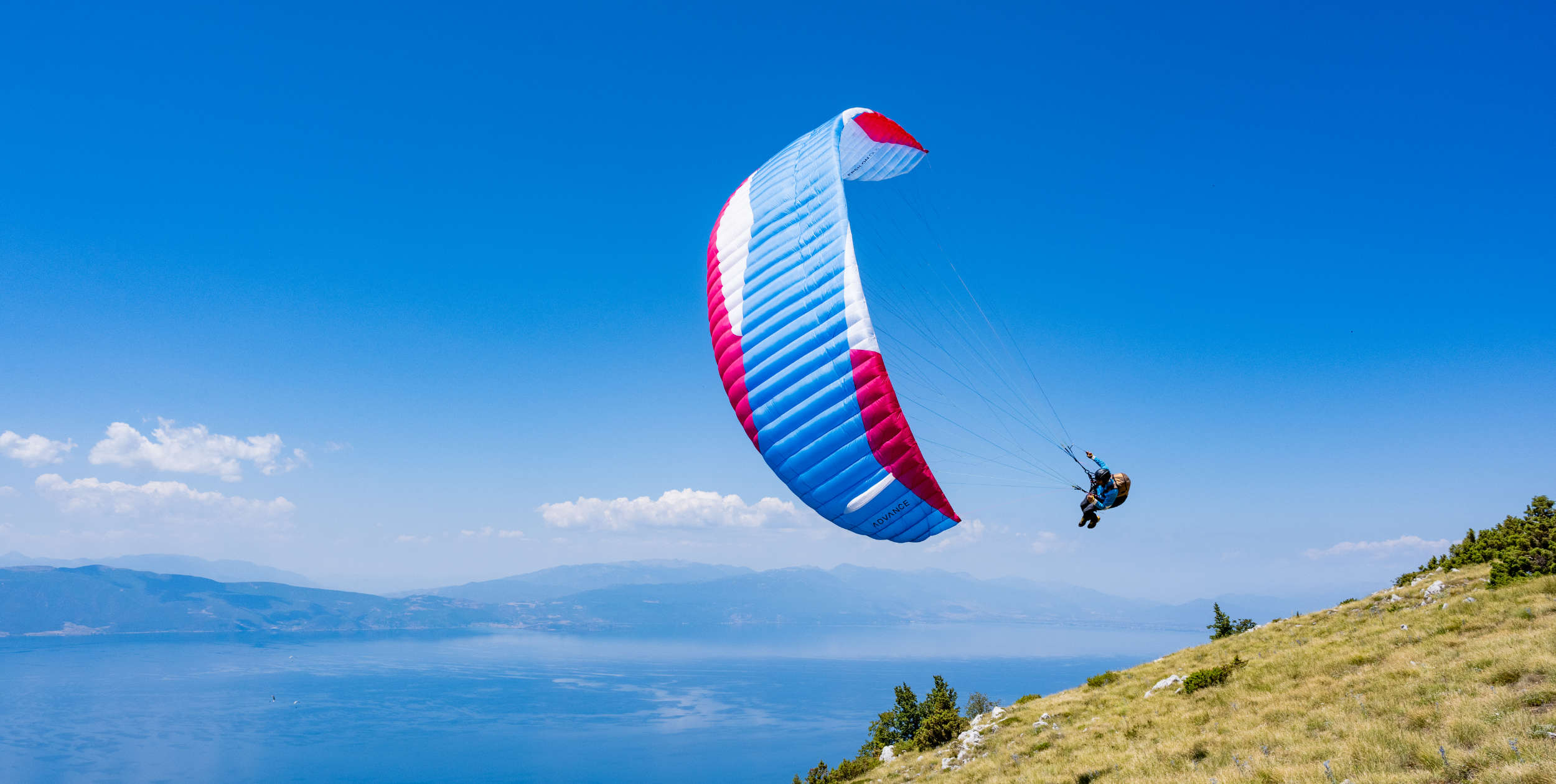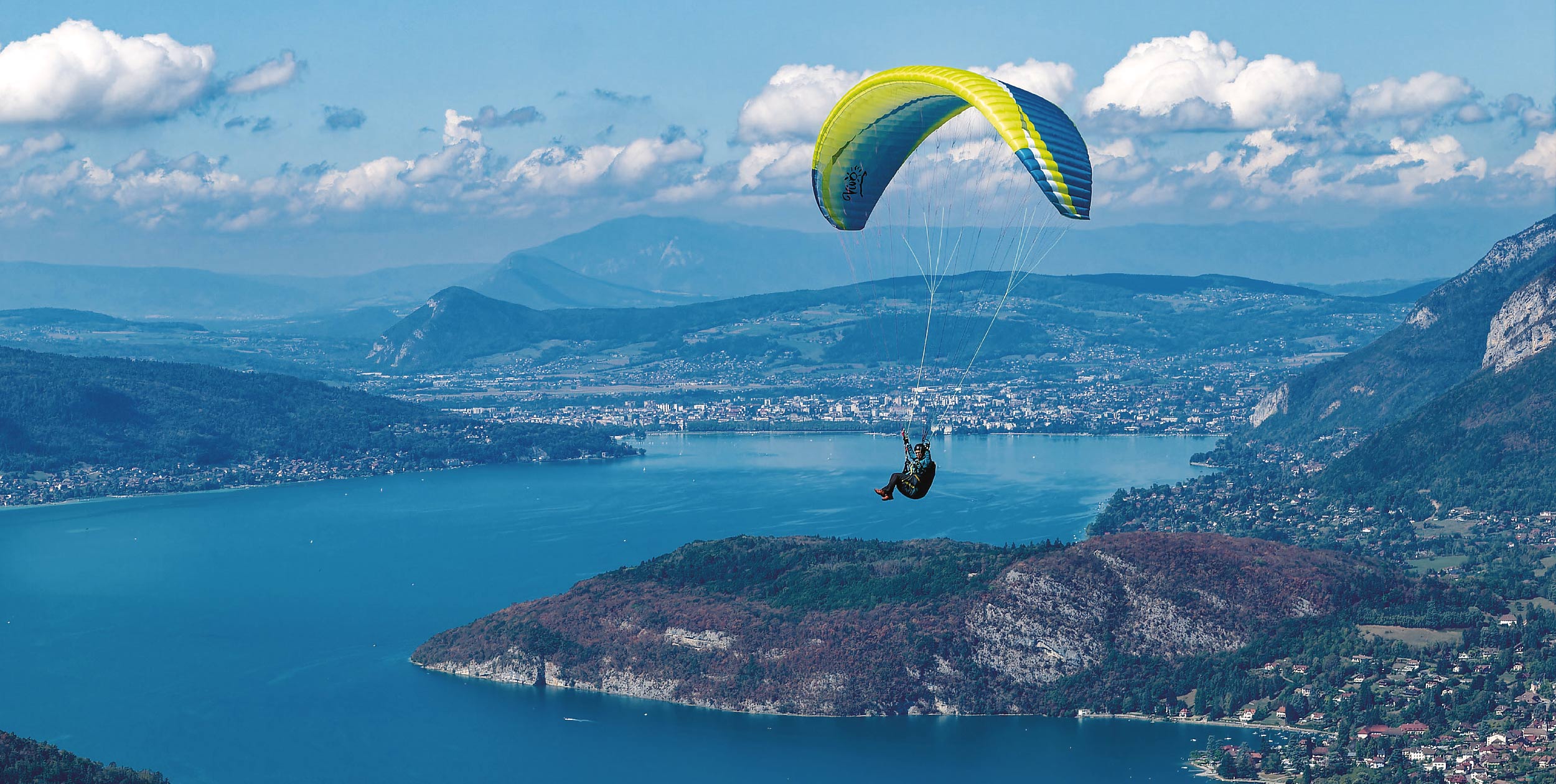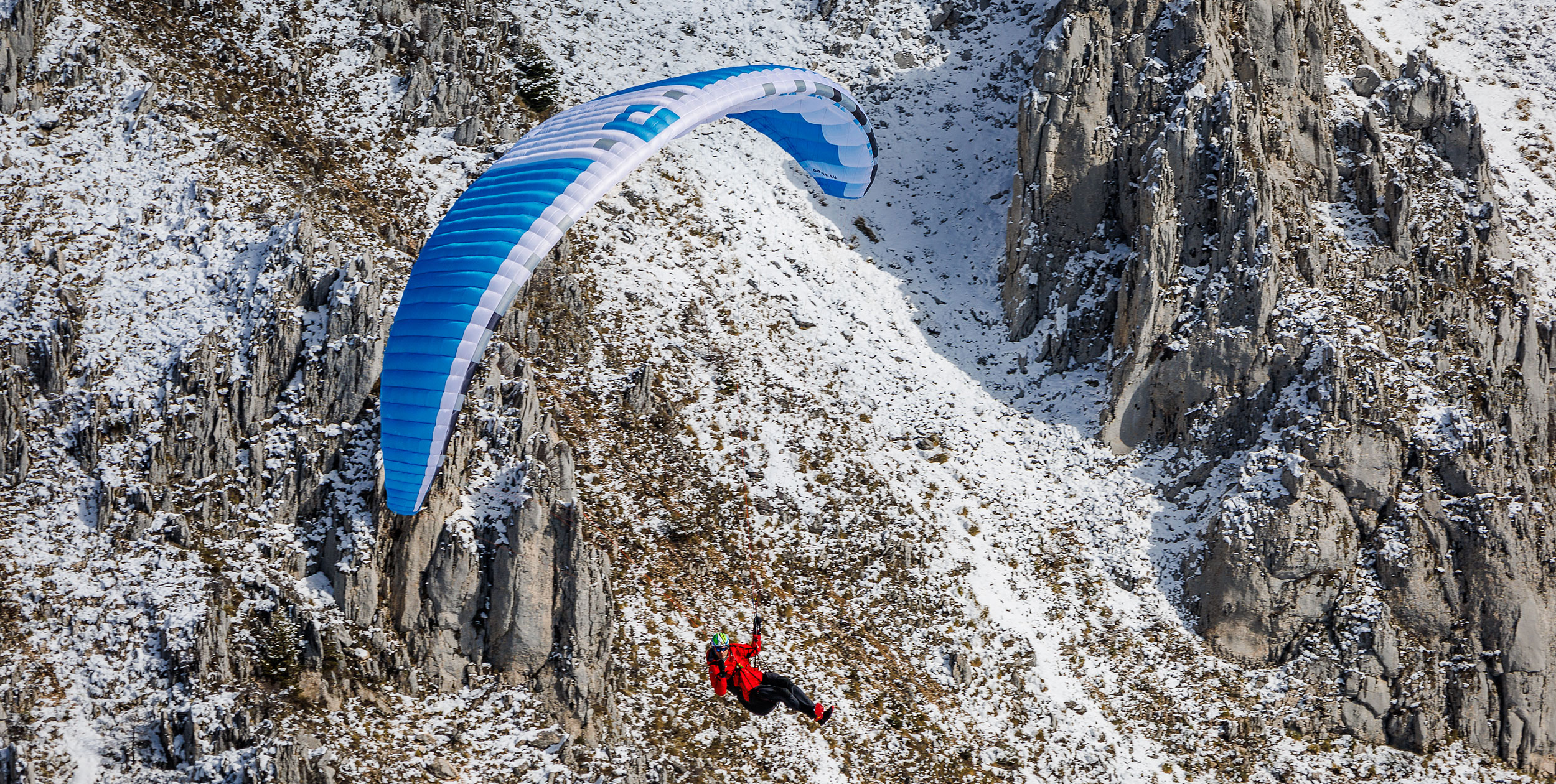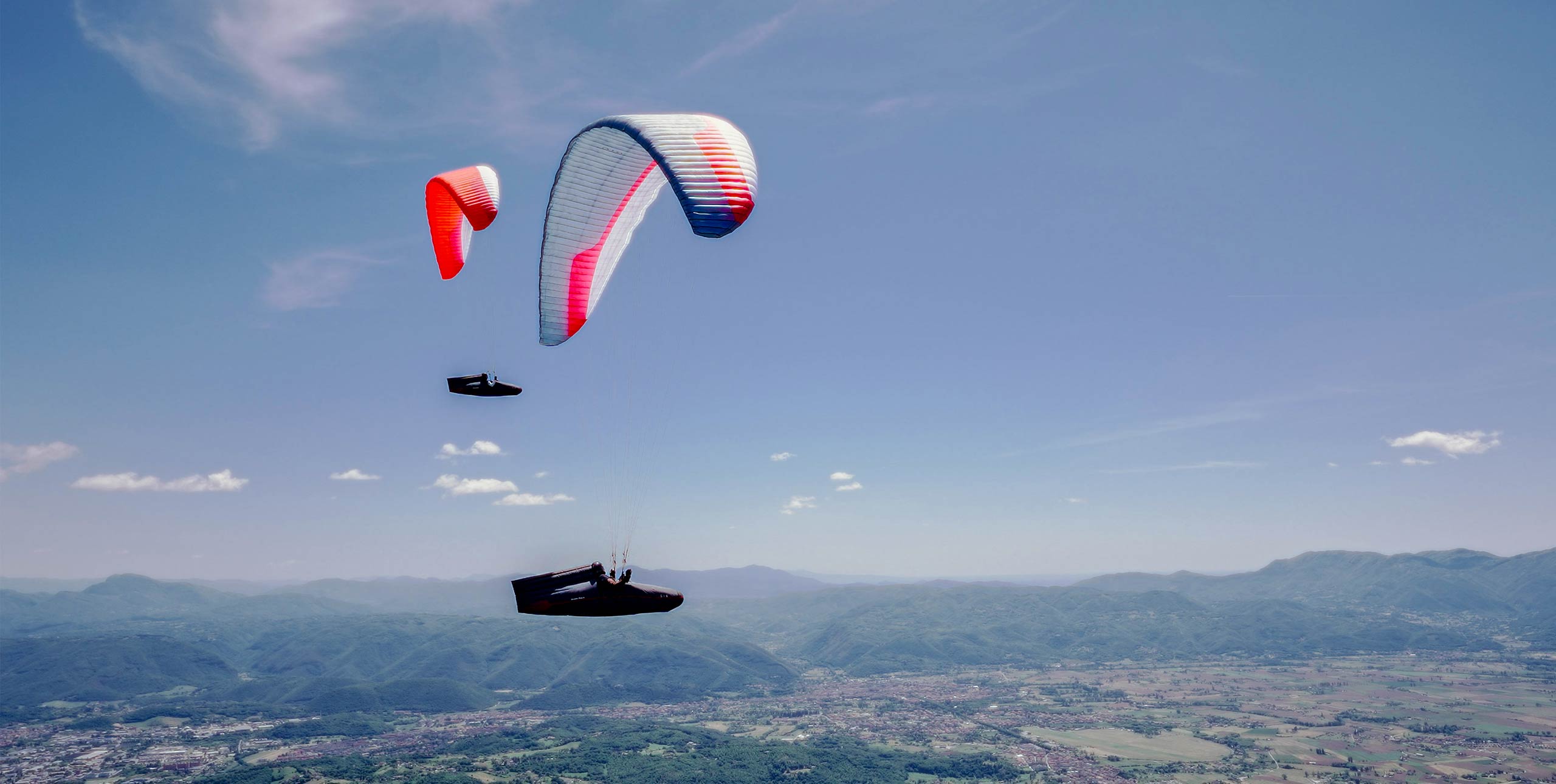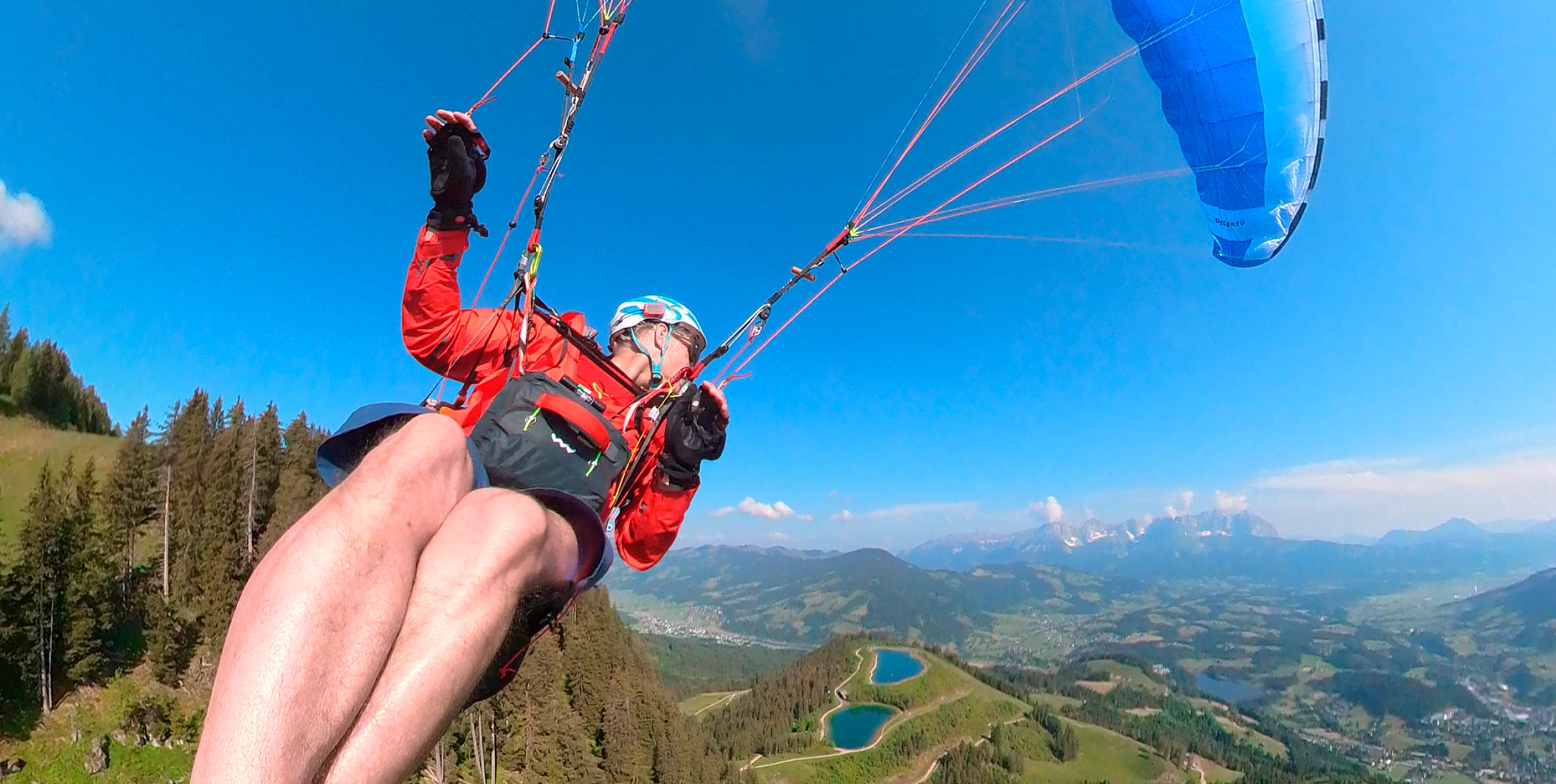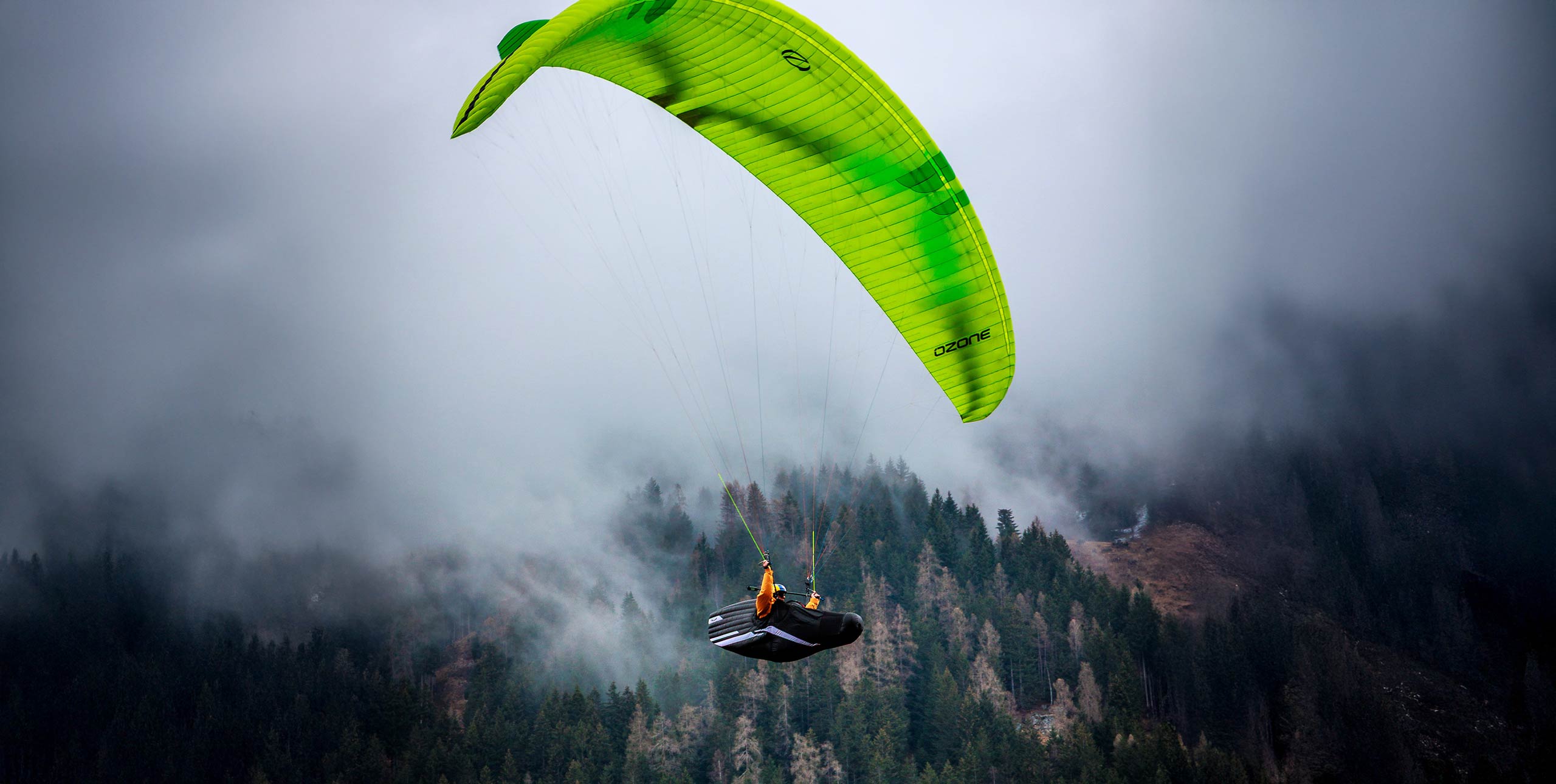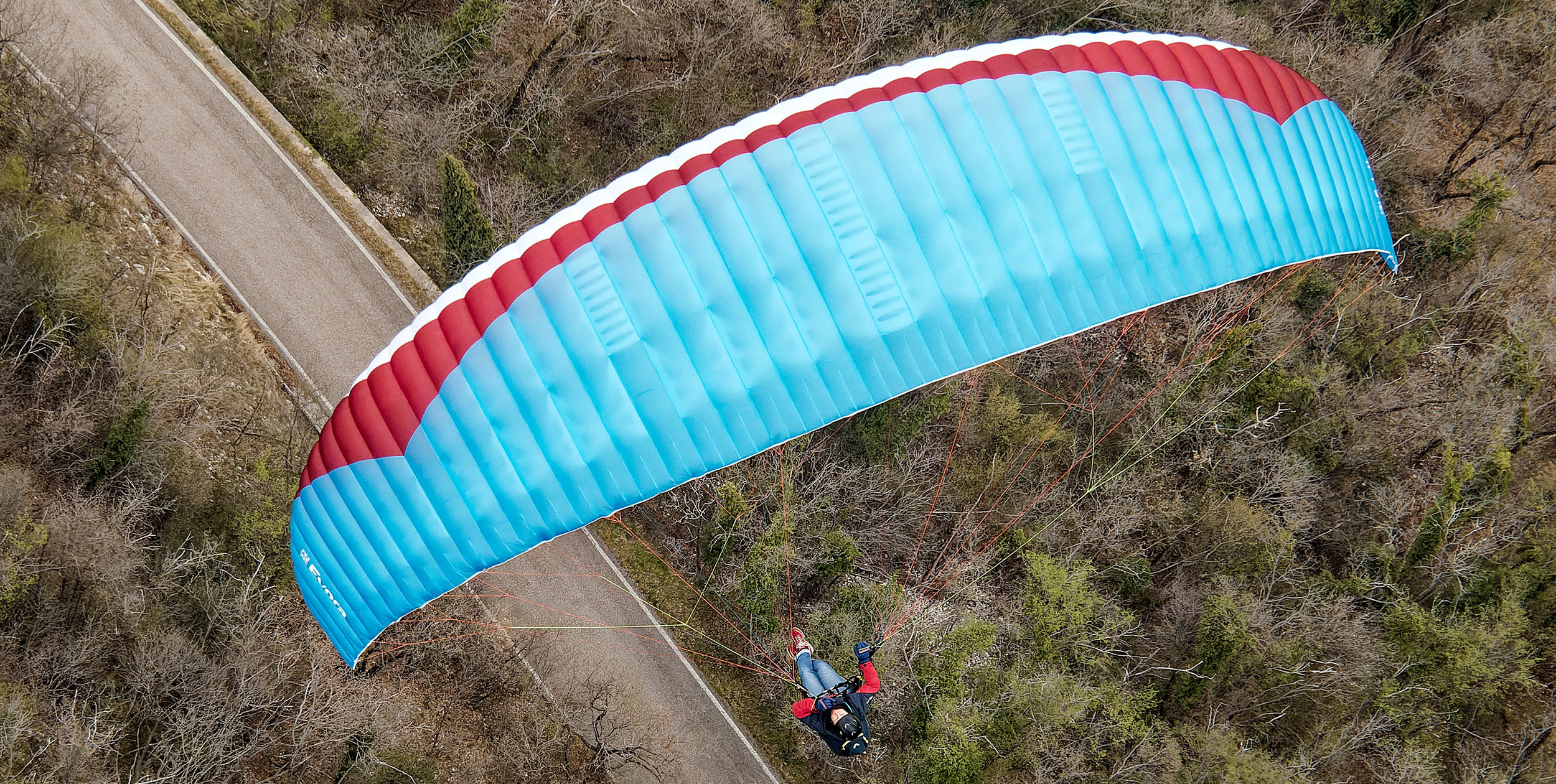
Bastienne Wentzel flies this new “easy intermediate” from Gin Gliders
The “easy B” class is crowded nowadays. New pilots and those who wish to fly for fun and keep things super simple often look for easy intermediates. Launched at the start of this year the Gin Evora is the latest member of this class. It is designed to be “undemanding for relatively inexperienced pilots, yet at the same time offer more than enough performance for the category” say Gin. To see what it has to offer I flew the Evora for a week in the fresh spring thermals at hotspot Bassano del Grappa in northern Italy.
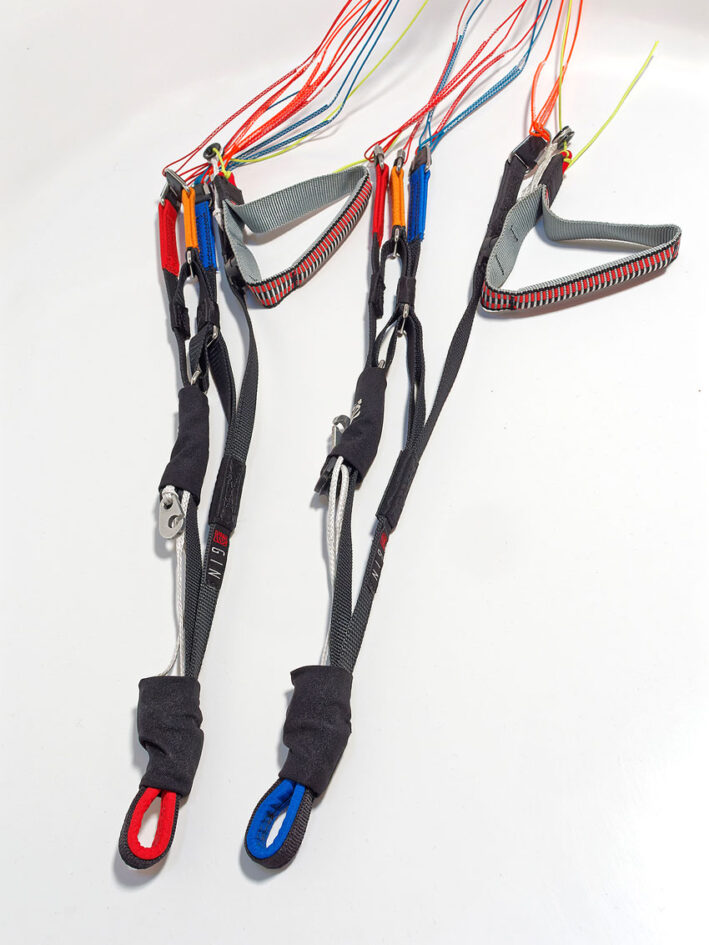
First impressions
Unboxing the Evora the first thing that popped to mind was that it was a small package which didn’t feel heavy at all. The XS size I flew weighs 4.5kg, which is average for this class, but it doesn’t feel bulky. The range consists of six sizes covering all-up weights from 55 to 135kg.
The second thing I noticed was the refreshingly simple risers which still look and feel sporty. They are made of 12mm webbing with sturdy colour-coded hook-in loops. Optional is a “smart riser” with a C-steering control toggle and a Harken pulley, which the standard risers do not have. These are meant for pilots who want to progress towards flying on bar more and want to learn to use C-riser control.
The brake lines run smoothly through a ring rather than a pulley. The handles are the standard grey-and-red type with an inflexible bar sewn in. They are not huge for use with big gloves but they fit. They have no swivels to prevent twisting of the brake lines. This would usually require attention from the pilot to regularly untwist the brake lines, but I didn’t need to unwind them at all during the review period.
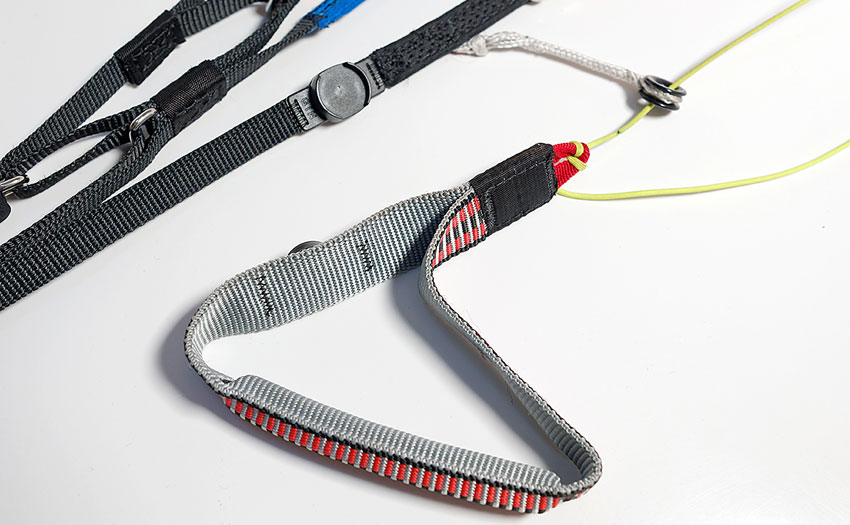
The flat magnets on the handles are strong and the toggles pop into place easily, even when you let go of the brakes during flight. The speed system runs through two Harken pulleys and is very smooth and easy to use.
The upper surface leading edge is made from the custom-made Myungjin MJ40 fabric while the rest of the canopy is made of MJ32. These materials were developed by Gin and Myungjin specifically for greater durability and porosity resistance. The fabric was first successfully used on the Fuse 3 tandem and is now found on many new Gin gliders. The lines are sheathed Dyneema except the top lines, which are unsheathed.
The Evora has a mild sharknose leading edge which should help “sniffing out thermals”. In addition to rods in the nose the Evora has long rods running over the upper surface of about a metre long. These were used on the EN-A Bolero 7 first (of about 30cm long) and are usually only seen in higher class gliders.
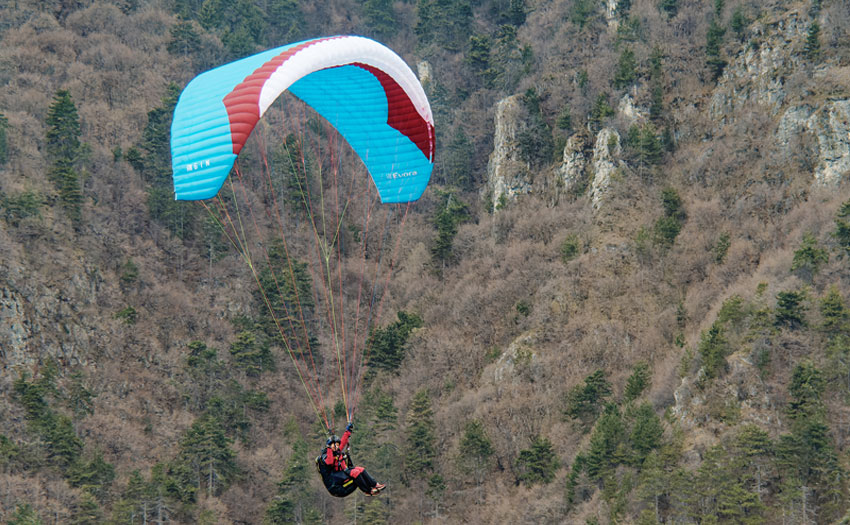
Launch and landing
On launch sorting the glider is a breeze, so you just have to worry about taking off. Actually, you don’t need to worry at all because the Evora is very easy to launch in all conditions. A light backwind doesn’t bother the wing, it just inflates and is ready to fly. But equally groundhandling in a gusty, turbulent breeze was no problem, although it did feel eager to fly.
On landing, I noticed how easy it is to place the Evora exactly where you want. The final glide seems quite flat. The flare is intuitive, generating a bit of lift just enough for a soft touchdown whether in nil-wind or with some wind.

Spring thermals
We had some challenging conditions during the week in Bassano in late March. A strong North föhn and a cold front passed, leaving us with strong spring conditions, a high cloudbase and some wind. Later on, rain and overdevelopment meant lighter conditions and occasionally running from the clouds.
The Evora was a great companion in these conditions. It didn’t flinch for a second when I was catapulted up into a strong and tiny core. Handling is quite dynamic, so I could make very short turns to hook into these cores, while the canopy didn’t show any tendency to lose pressure, not even at the tips. It does get tossed about a bit, so you have to delibarately steer into the thermal yourself, but I felt that for its class there was not a lot of knocking back when entering a thermal. Due to its pitch stability it doesn’t really pull into thermals but once or twice I did feel that it actually “sniffed out” a thermal; I didn’t feel pushed out of thermals a lot either.
When we were all scratching to stay up I found the Evora was efficient for its class in these light conditions. It gave me the possibility of a few low saves when options were running out. The direct handling made it easy to turn flat and also to flick it around when avoiding other gliders in the crowded air. The canopy conveys a little bit of information about the air, but due to its stability the “chatting” is kept to a minimum.
On speed bar the Evora is very stable. It is easy to push full bar and it doesn’t feel like the glider will do anything unexpected. In real-world conditions flying into wind through compression to connect to the next ridge I found the whole speed system fully usable. It does of course lose some glide performance on bar, but that is to be expected for any class of wing.
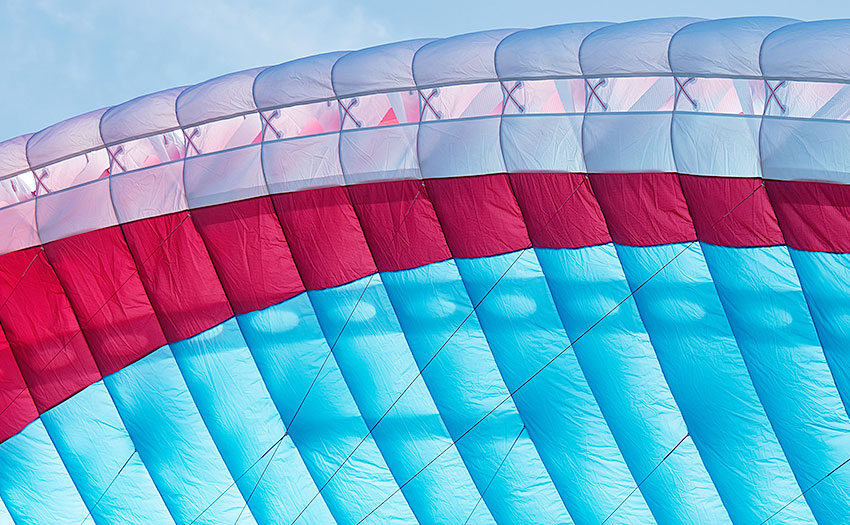
Descent methods
No surprise the Evora has a separate A-riser to pull big ears. I found these light to pull and easy to hold in. They are pretty large and efficient and popped out on their own. Used together with the smooth speed bar this is a great descent method.
The wing’s dynamic handling makes the Evora fun to play around with. Spirals are easy to control, and thus serve as a good descent method as well as for learning to control spirals. Wingovers and pitch pendulum exercises are fun and offer no surprises. And finally the brakes are very progressive: the first 20cm or so are direct, not too firm and great for manoeuvring.
Pull more than that and you’ll feel an increasing amount of pressure up to the stall point which really requires a lot of force. This is a great safety feature as the Evora will be hard to stall accidentally by any over-enthusiastic pilot input.
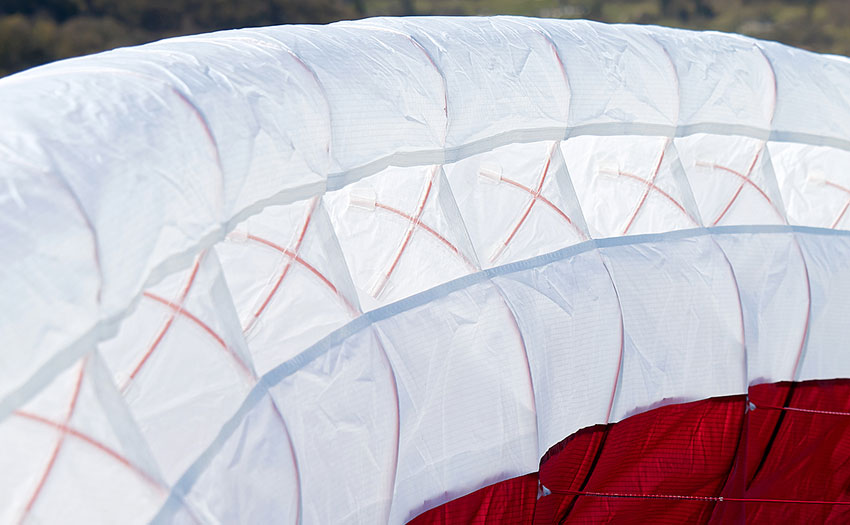
The verdict
Billed as an “easy intermediate” the Evora sits between the Bolero 7 EN-A and the top-end EN-B Avid. I feel that the Evora doesn’t quite sit in the middle of these but sits at the easy end of the B-class. It is just as much fun to fly but much less demanding than a high-end B glider at the cost of some performance into wind and on bar. It is suitable for any newly qualified pilot and I wouldn’t be surprised if it will be used by some schools for students as well. It is certainly forgiving enough.
Any new pilot looking for a first wing should include the Evora on their wishlist. It is perfect to learn how to thermal in light or strong conditions alike and to learn to fly on bar more. The leisure pilot will appreciate the stoic behaviour of the Evora in the most challenging conditions, leaving plenty of headspace to enjoy flying around in the house thermal or further afield.
Manufacturer’s SPECIFICATIONS
Gin say: “Talented beginners and established leisure pilots alike will appreciate the unique qualities of the Evora.”
Use: leisure flying
Pilot level: beginners and leisure pilots
Sizes: XXS, XS, S, M, L, XL
Flat area (m²): 21.54, 23.45, 25.45, 27.53, 29.68, 31.92
Weight (kg): 4.2, 4.5, 4.7, 5.0, 5.3, 5.65
Take-off weight (kg): 55-75, 65-85, 75-95, 85-105, 100-120, 115-135
Cells: 51
Flat aspect ratio: 5.3
Certification: EN B
Published in Cross Country 240 (June 2023)


